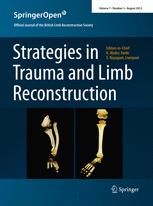
HAND & WRIST
High risk of complications with surgical treatment of unstable palmar plate disruption
This report has been verified
by one or more authors of the
original publication.
Strategies Trauma Limb Reconstr. 2013 Apr;8(1):21-4. doi: 10.1007/s11751-013-0154-y. Epub 2013 Feb 23
83 patients with unstable palmar plate disruption in the proximal interphalangeal (PIP) joint were randomized to receive either conservative or surgical treatment in order to determine which method was more effective. Evaluations over a 12 month period indicated that pain scores, range of motion, and hyperextension instability outcomes were all similar between groups. However, the incidence of complications was much higher in patients treated surgically compared to those treated conservatively.
Unlock the full ACE Report
You have access to {0} free articles per month.Click below to unlock and view this {1}
Unlock NowCritical appraisals of the latest, high-impact randomized controlled trials and systematic reviews in orthopaedics
Access to OrthoEvidence podcast content, including collaborations with the Journal of Bone and Joint Surgery, interviews with internationally recognized surgeons, and roundtable discussions on orthopaedic news and topics
Subscription to The Pulse, a twice-weekly evidence-based newsletter designed to help you make better clinical decisions
Exclusive access to original content articles, including in-house systematic reviews, and articles on health research methods and hot orthopaedic topics
Or upgrade today and gain access to all OrthoEvidence content for just $1.99 per week.
Already have an account? Log in


Subscribe to "The Pulse"
Evidence-Based Orthopaedics direct to your inbox.
{0} of {1} free articles
Become an OrthoEvidence Premium Member. Expand your perspective with high-quality evidence.
Upgrade Now













































































